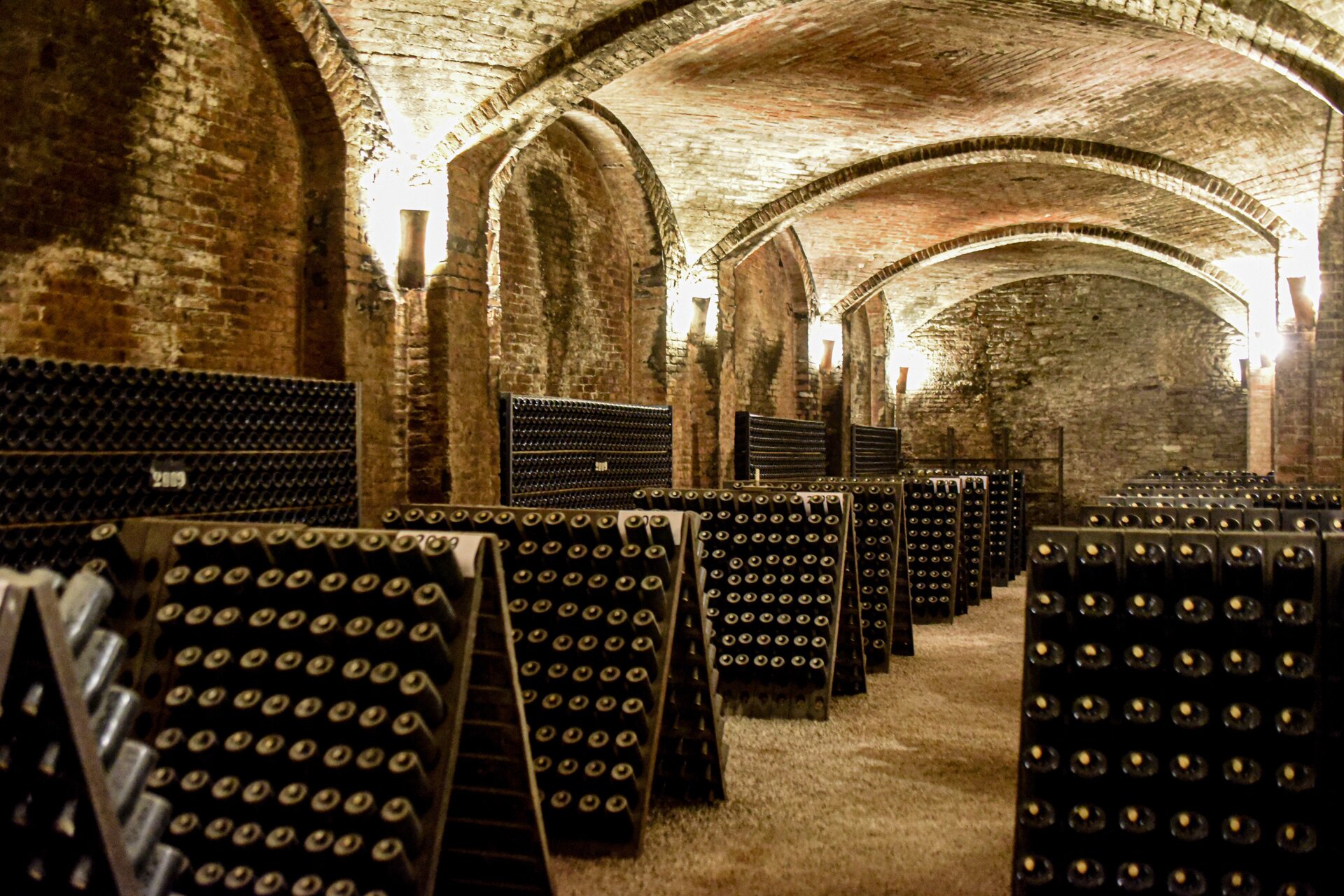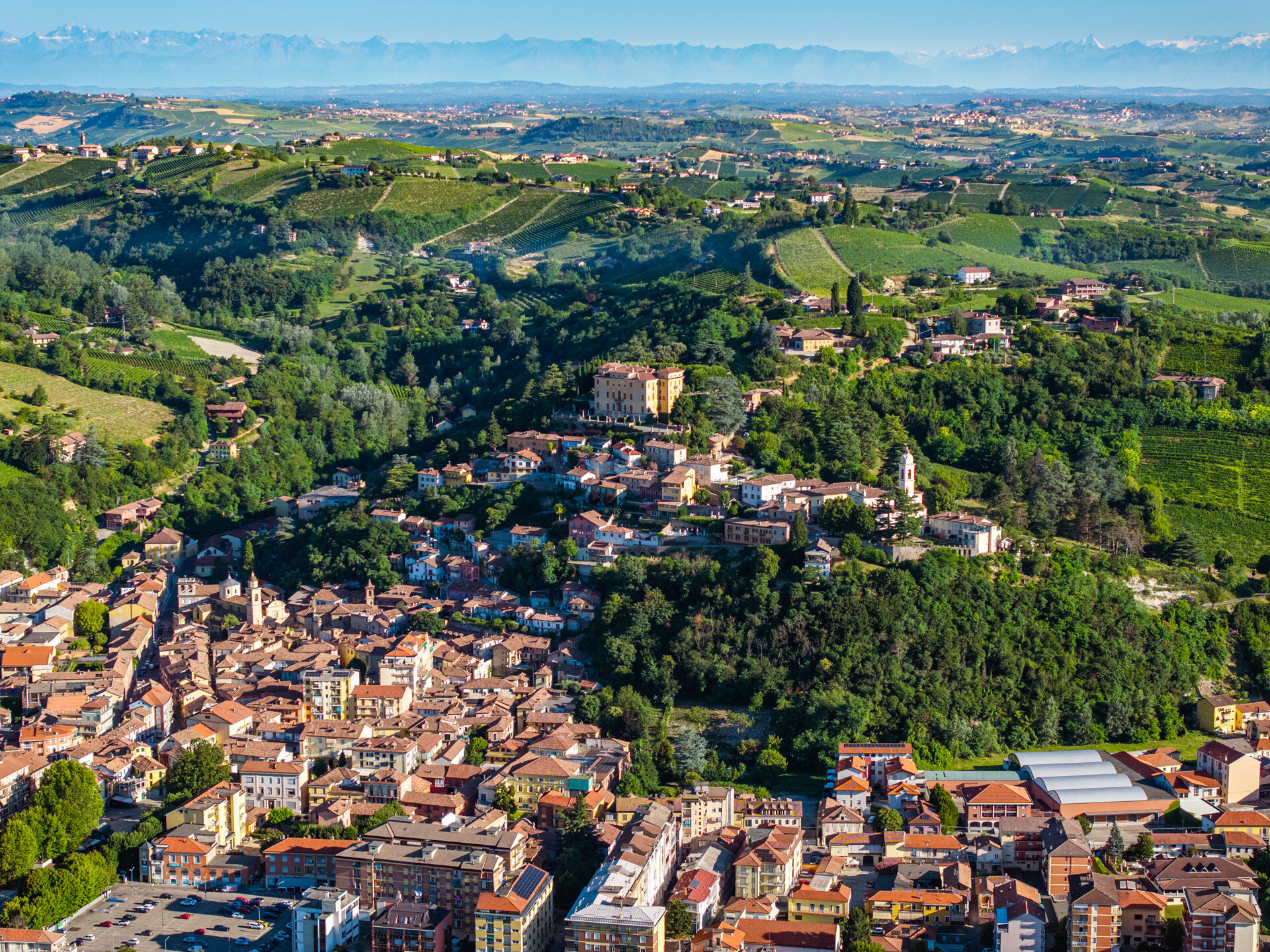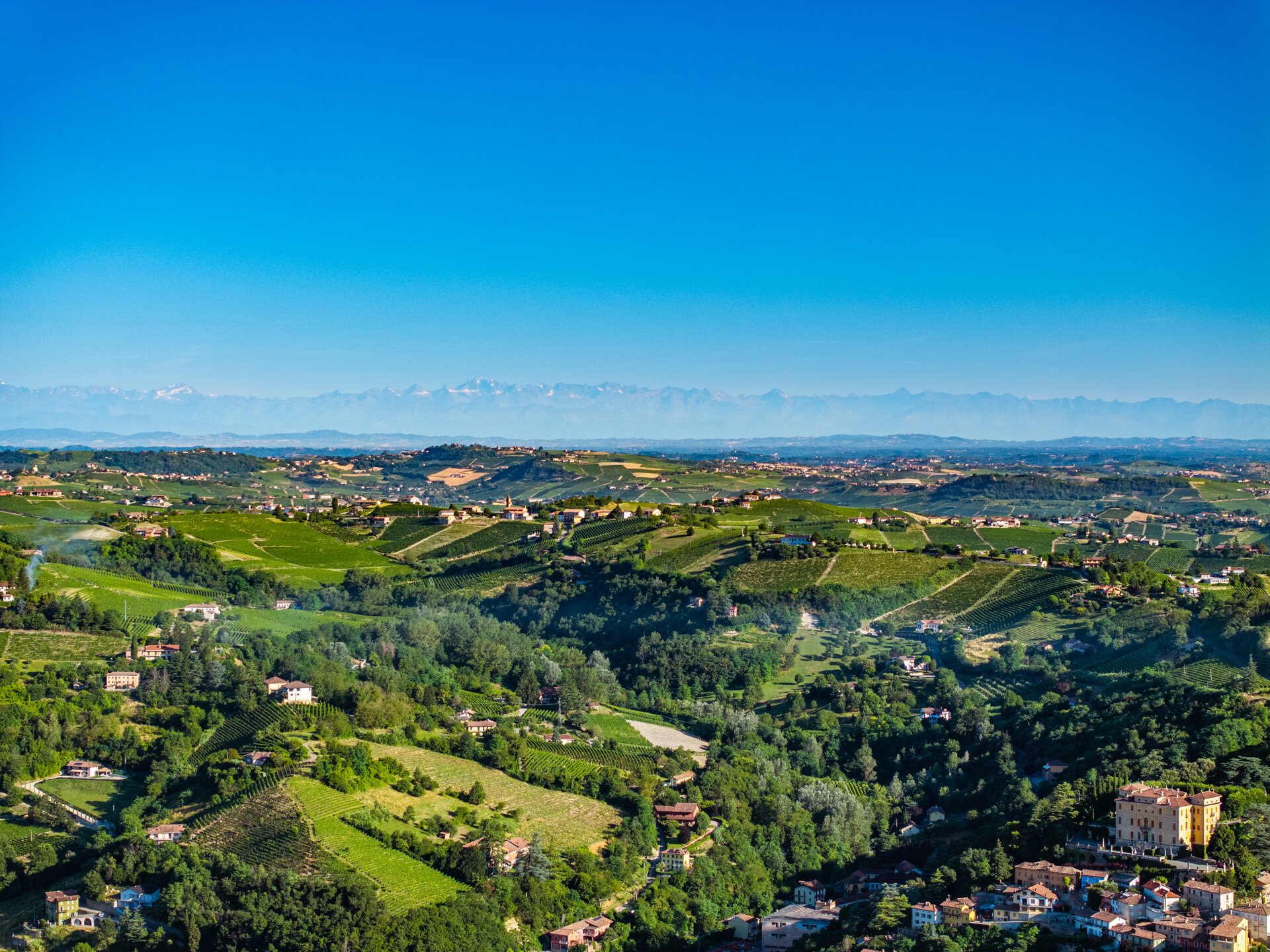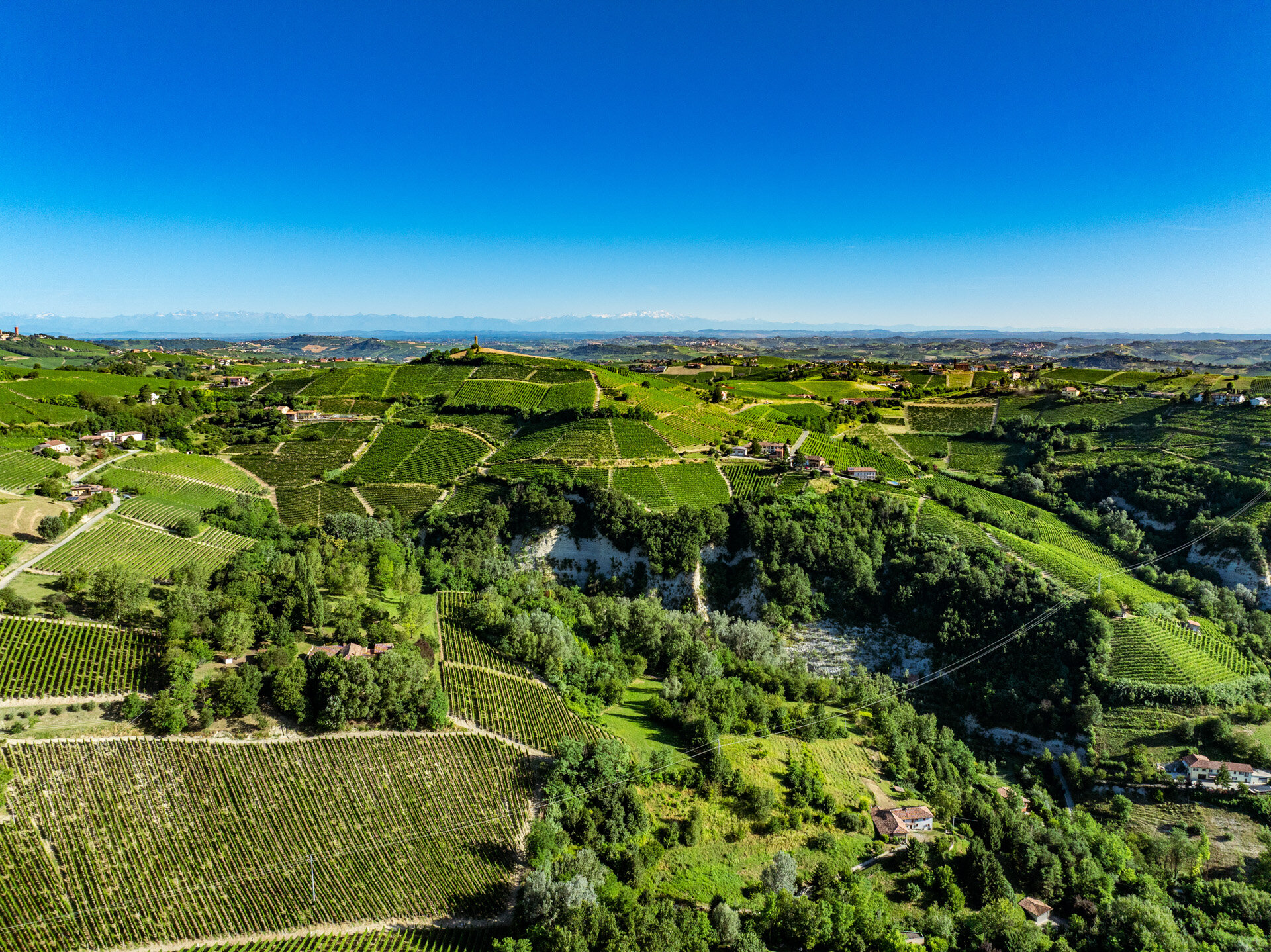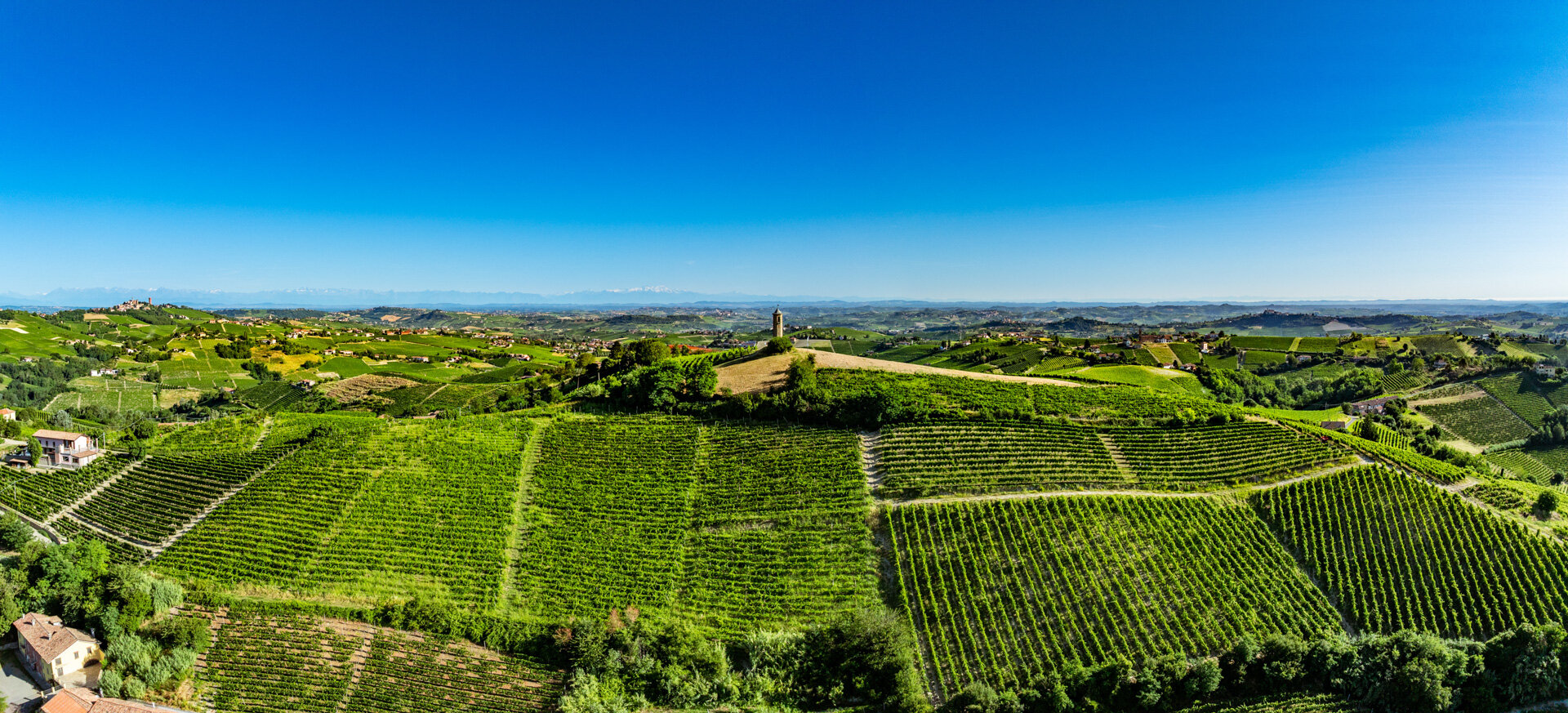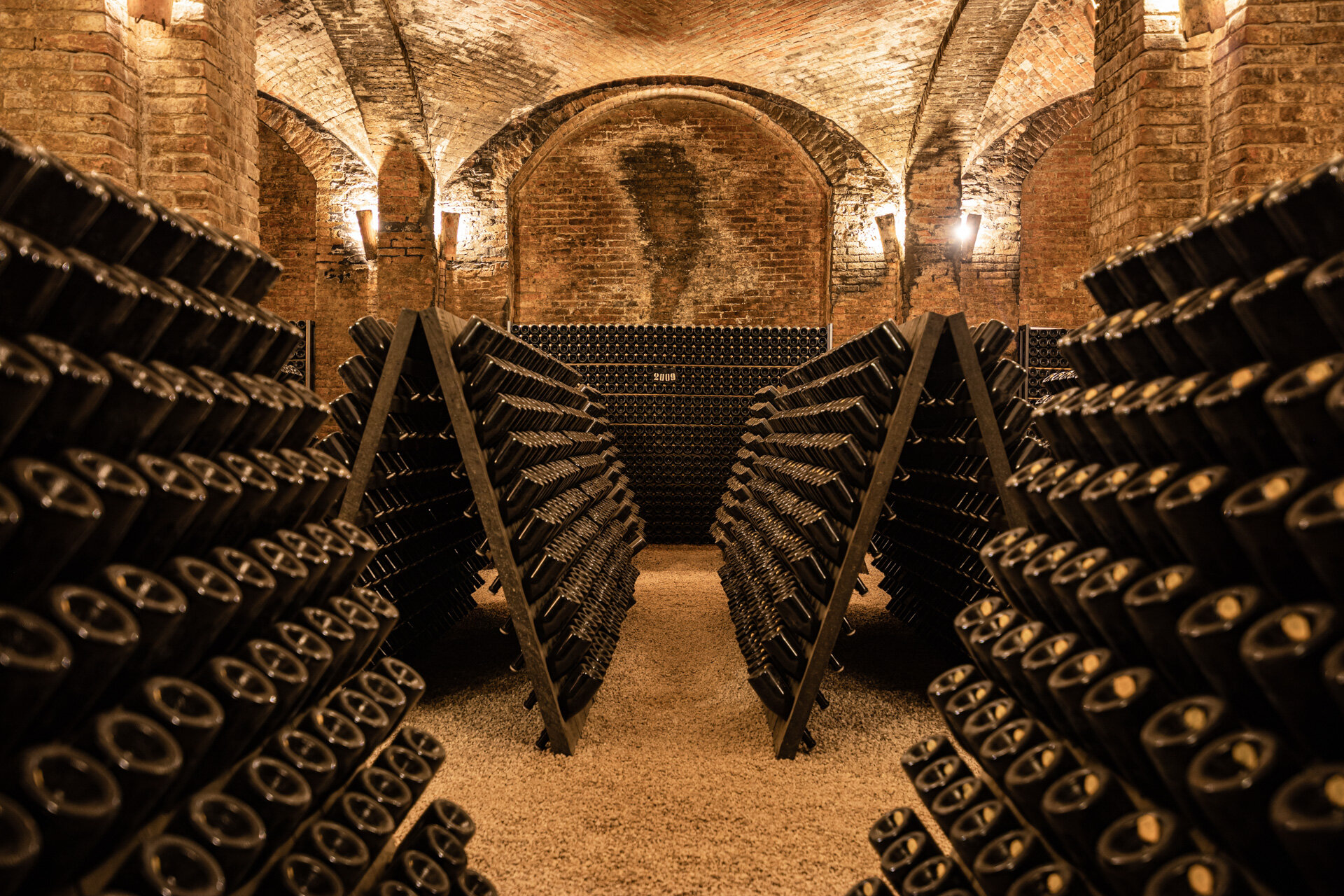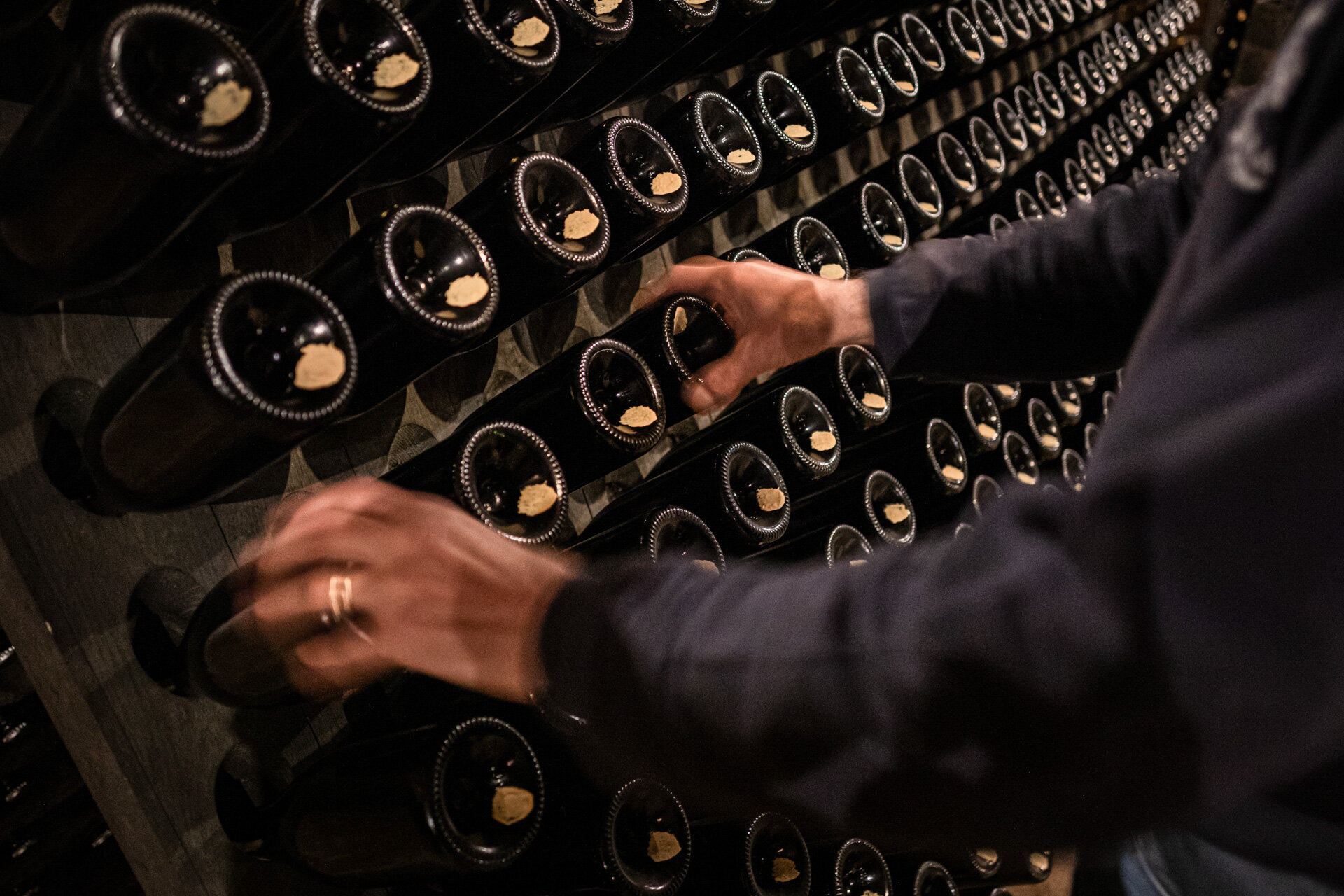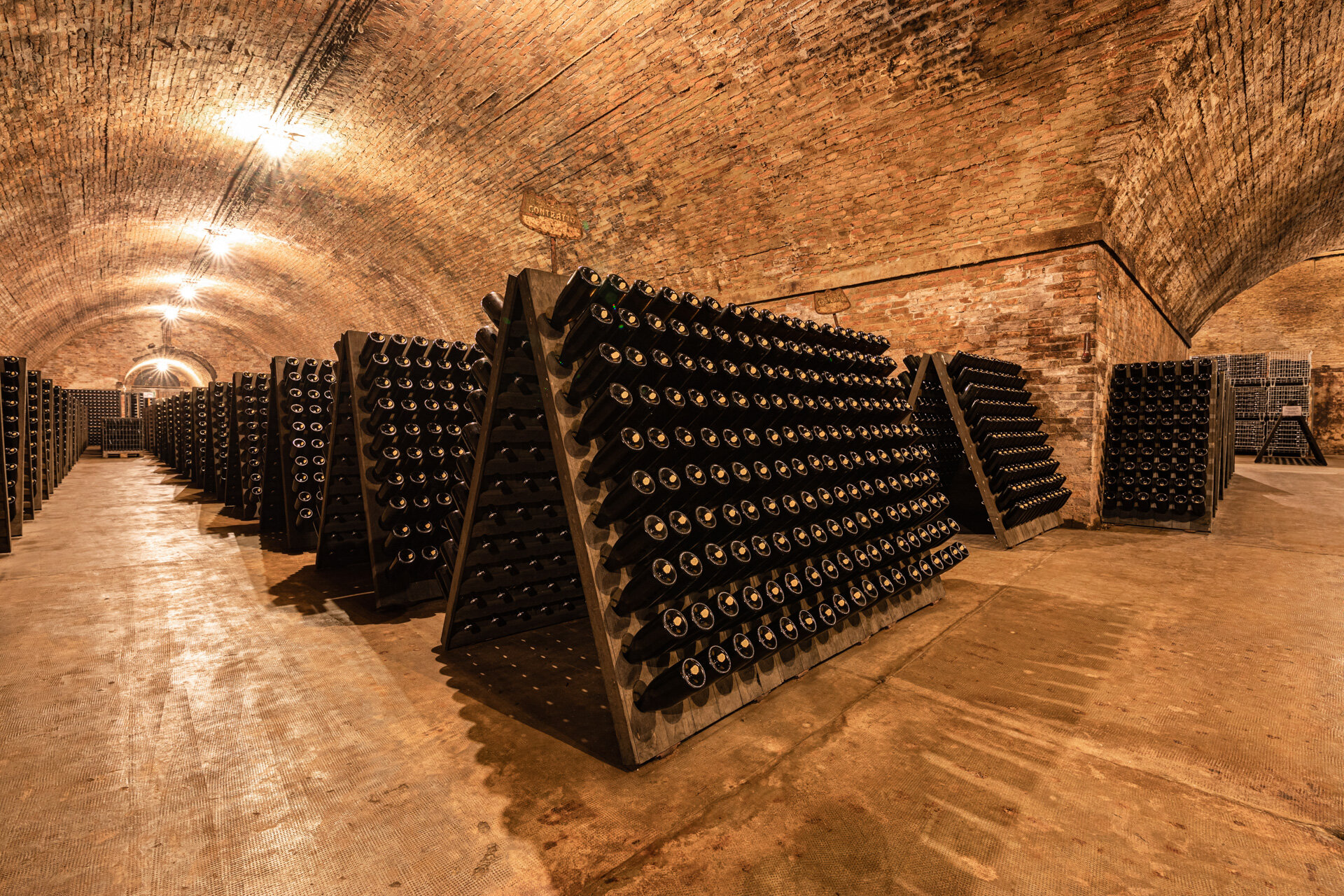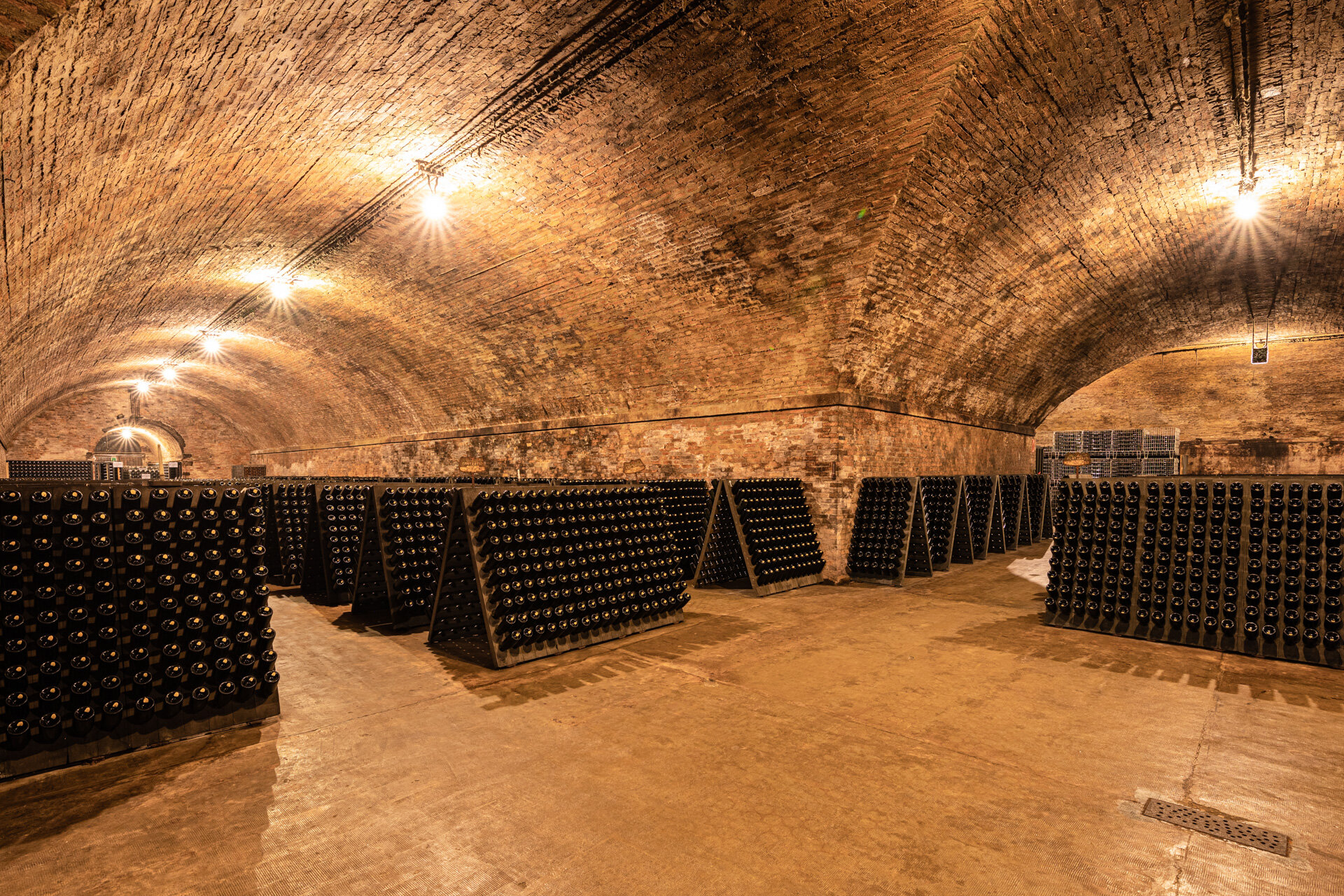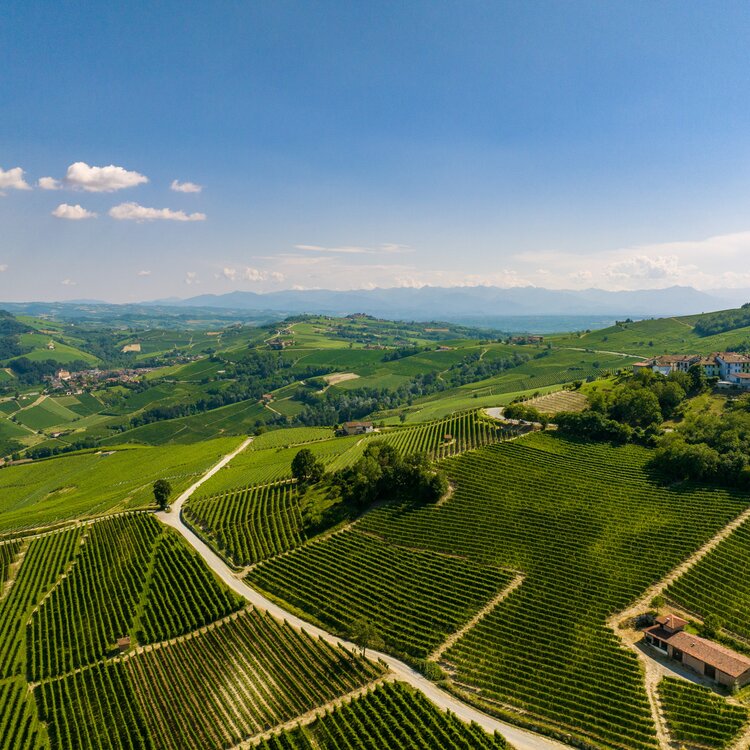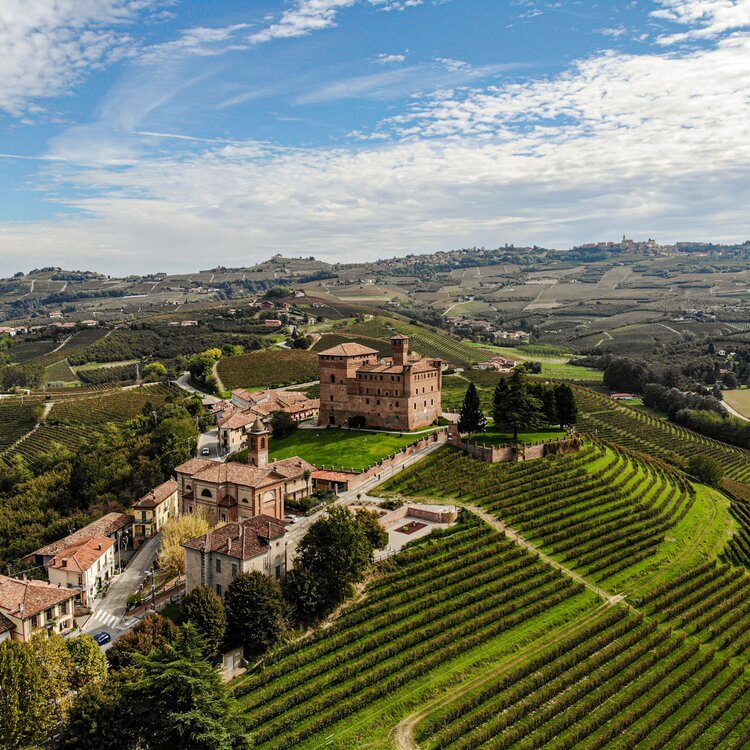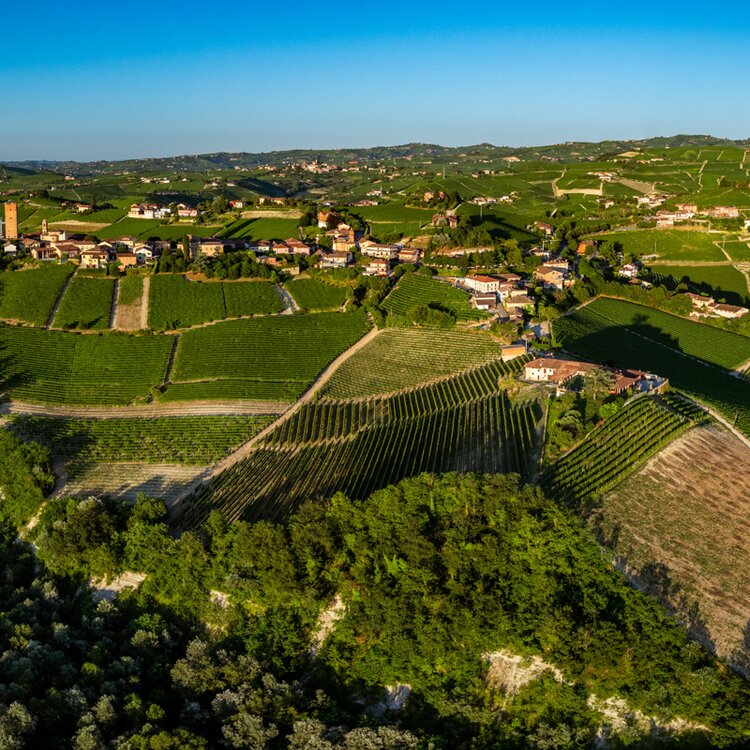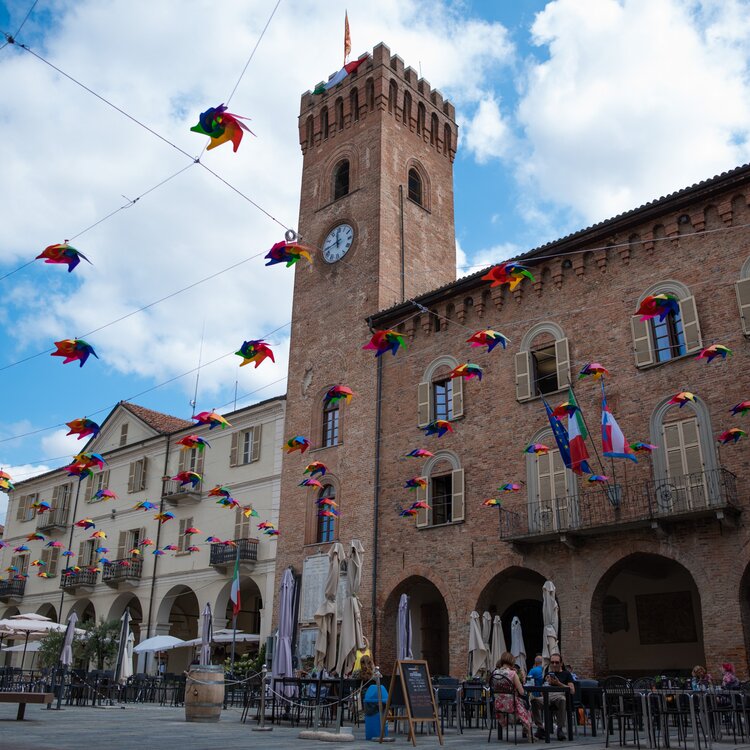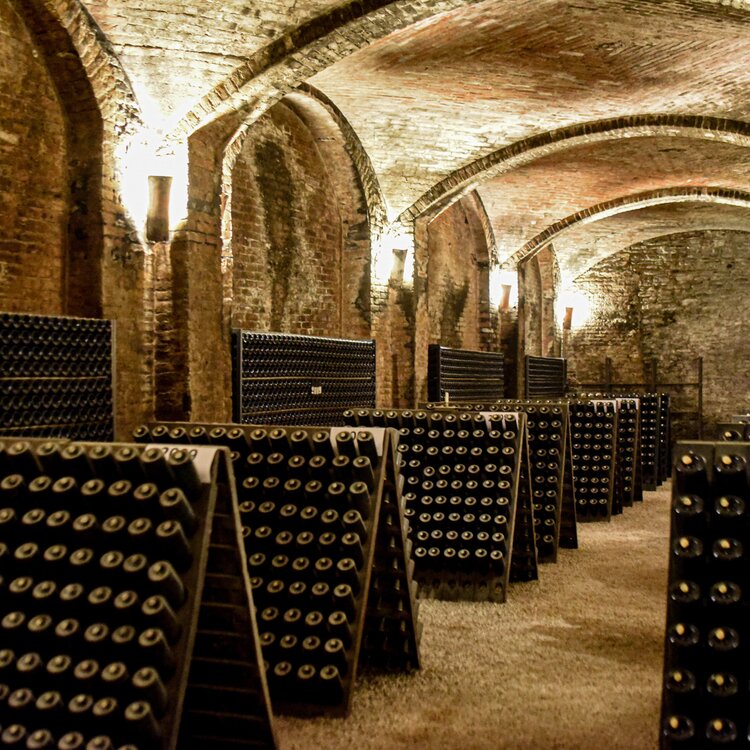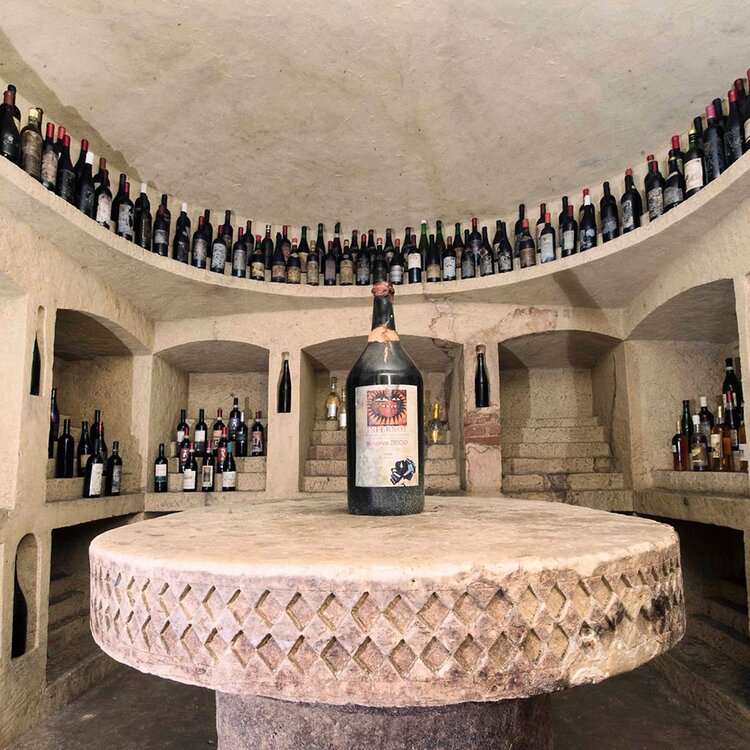Descending into the underground world of Canelli reveals a surprising landscape of kilometres of tunnels dug into stone with brick vaults, all bathed in a silence preserved by time. These are the "Underground Cathedrals", where the history of Asti sparkling wine has been shaped since the second half of the 19th century. It was here, amid the barrels and bottles stored on the racks and the exposed brick walls, that oenologist Federico Martinotti developed an important innovation in sparkling wine production. This innovation was subsequently refined by the Charmat method.
However, the territory also reveals its identity on the surface: vast, orderly vineyards stretching elegantly across the landscape, bearing witness to men's work and their harmonious interaction with nature.
Cultivated for centuries on the hills of Asti in Piedmont, Moscato Bianco has found the ideal conditions here to express all its aromatic qualities. These grapes are used to make Asti Spumante, a symbol of joy and refinement that is known and appreciated worldwide.
The success of wine has gradually transformed this area, once devoted to polyculture, into one of the most important centres of Italian viticulture. With its historic wineries, cellars and sparkling wine producers, and priceless underground heritage, Canelli is the undisputed capital of this winemaking region.
The city, which has medieval origins, is divided into two areas: Villanova, which developed around the original fortified structure, and the village, which extends around the castle. The urban architecture, like the agricultural landscape, reflects the constant adaptation to the rhythms and needs of wine production.
Today, Canelli and Asti Spumante embody much more than excellence in production; they are a synthesis of ancient knowledge and a tradition of craftsmanship passed down through the generations, amidst the light of the hills and the shadows of their underground cathedrals.
